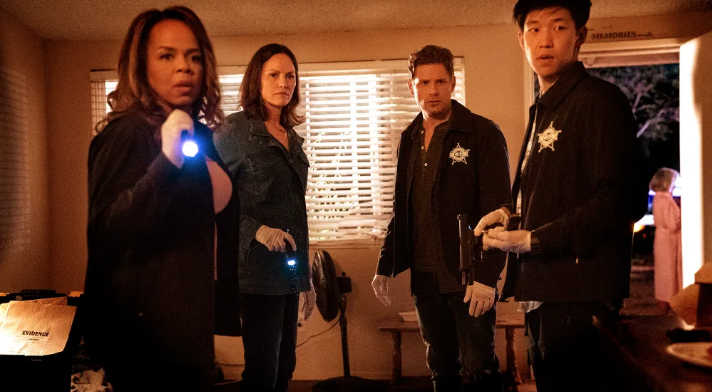
In the book, Disney War, author James B Stewart talks about the mysterious workings of a team nestled within the bowels of finance. In 1999, these analysts – today known as “financial planning and analysis” (FP&A) professionals – had been tasked by then-ABC chairman Bob Iger, now Disney CEO, to test the viability of a new production called “CSI”. The anatomy show had been thought up by Top Gun producer Jerry Bruckheimer under contract with Disney/Touchstone TV studios. On the table was whether a forensics crime drama show could, in fact, make any money. Disney’s analysts probed the possibility of selling syndication rights to rival network, CBS (Disney’s ABC had itself passed on airing it as they thought it would be an expensive flop).
Duly, the Disney finance team presented a scenario analysis working up three scenarios: “high”, “medium”, and “low” depending on how CSI might perform in the ratings, concluding that even under the “high” scenario CSI would lose money for Disney. Iger, also reluctant to give a show to another network, decided not to back the show.

That proved an incorrect decision. CBS produced the show, and it became a number one hit (spin-offs, such as “CSI: Miami,” “CSI: NY” “CSI: Cyber” and today’s reincarnation “CSI Vegas” followed). In those same decades the role of FP&A in Hollywood emerged to take on more responsibilities in corporate finance. Today FP&A job duties go deeper including development of plans and projections, evaluating trends and variances, evaluating complex investment decisions, and pondering acquisitions.
Behind FP&A in Hollywood: Beyond the numbers
Compared to producers and actors strutting red carpets, number-crunchers remain secretive. Their starring spreadsheet has an unglamorous title of the “Cost Report”. John Gaskin, a former production accountant who has worked with director Ron Howard on hit movies, alongside shows such as Law and Order, writes on his blog that the cost report is so “confidential that not even Variety Magazine nor the Hollywood Reporter even refer to it.” This sacred spreadsheet’s most important column is the “Estimates-To-Complete ” signaling remaining costs to complete, say, the next Mission production, Game of Thrones spin-off or Emily in Paris.

Invasion of the Budget Snatchers?
This all paints FP&A as a budget police cutting knees of free spending creatives. But a recent ad for VP of FP&A at Paramount shows otherwise.
Like other job posts for top FP&A roles, this high ranking position considers the most important thing for the Paramount FP&A division to get right “is ownership of the P&L” – or profit and loss account. This is alongside preparing the annual budget. A prosaic-sounding duty also includes monitoring foreign exchange rates and “associated impact on forecast results”. In fact, Jon Laudie, CFO at Zerorez and formerly an FP&A manager at Netflix told podcast FP&A Today of his experience at the streaming giant: “I was figuring things out that I had no idea like, ‘hey, we have exposure in Brazil with our currency and our business there, and we have FX risk, and let’s figure out how do we mitigate that?’”
How FP&A plans the next Big Hit
But what is the role of FP&A if any in finding the next big gamble. For Netflix this was exemplified by Squid Game, a South Korean violent survival drama television series which bludgeoned its way to a $900 million in value from a $21 million output (a sequel is on its way).

Nat Schindler, a senior internet and digital media analyst at Bank of America told Yahoo News FP&A shapes Hollywood hits . “Most companies have an FP&A group, but Netflix has a CP&A group, that is ‘content planning and analysis’, a finance team that kind of decides whether or not something is worth it.”
“Most companies have an FP&A group, but Netflix has a CP&A group, that is ‘content planning and analysis’, a finance team that kind of decides whether or not something is worth it.”
Nate Schindler, senior media analyst, Bank of America
This helps to bring a hit into the valuable library well beyond the initial success. But, says Mr Schindler, even though Netflix has tons of data, “they still don’t know. It’s a guess”. Former Pixar CFO Lawrence Levy in his book To Pixar and Beyond says movie financing was explained to him by A-list Hollywood executive Joe Roth as a “portfolio business”. Roth explained: “Each year a studio earmarks funds for a slate of films low budget, medium budget, and big budget. Then we do the same with marketing, allocating amounts to market each film. We release the slate, hoping that we create enough hits to make up for the ones that don’t perform.”
The tech challenge. Excel: The Movie
As well as working in the shadows, Hollywood finance teams suffer from a Cinderella status when it comes to getting their hands on transformative tech to do their job. Despite commonly de-aging stars on screen, in the CFO’s Office finance folk rely on interlinked and confusing Excel spreadsheets which power most big hits. Datarails, an AI-powered FP&A solution, which integrates with the main TV and film finance software(such as Movie Magic) has provided a happy Hollywood ending for at least 12 big finance teams in the industry.
“I have all the different shows that I track on Excel. I track the budget separately for each production and then I track them from QuickBooks. Then I will look at how much we have spent on this project. I’ll recreate the wheel and consider what we spent last year.”
FP&A Director in the movie industry prior to choosing Datarails
The following transcripts about painful finance processes are taken from initial introductory sales calls. One VP of Finance at a production studio in North America talks about the “painful process”. She says: “I have all the different shows that I track on Excel. I track the budget separately for each production and then I track them from QuickBooks. Then I will look at how much we have spent on this project. I’ll recreate the wheel and consider what we spent last year. I ask ‘what’s the total cost for the project? What’s my budget? And who are my other researchers left?’ Like this, I can project whether we are going to be on budget or off budget.”
An animation studio finance head adds: “We create an estimated time to completion for each project and then go to the General Ledger – the main accounting record of a company or organization and manually populate it.” The effect is that FP&A teams complain that most of their time is spent doing “financial planning”. By contrast very little time is spent on “analysis”.
Batcave analysis: the power of Hollywood FP&A

| CREDIT: LESLIE GRACE/INSTAGRAM
Giving FP&A better technology and a more starring role may improve the lot of finance analysts in Hollywood. But at the moment FP&A show the occasional flashes from their bat caves. Take the cancellation of BatGirl, a $90million too-bad-to-release movie sacrificed as a tax write-off. Warner Bros. Discovery CFO Gunnar Wiedenfels speaking at a Bank of America conference hinted at FP&A involvement: “My team has helped them by providing financial data points where possible, and a framework to assess the potential from a financial perspective.”

Choosing his words carefully, Mr Wiedenfels stressed his finance team is not about budget-slashing, but protecting the interests and reputations of the studios. For productions this means being empathetic, and chatting to creatives and marketing teams contributing to “business partnering’. In this scenario, creativity always trumps cost-cutting when it comes to Hollywood FP&A. “We have made some course corrections,” says Mr Wiedenfels, “but we are in business to create content and tell fascinating stories and we will fund that.”